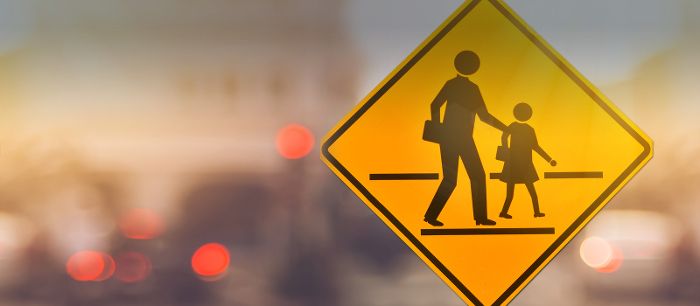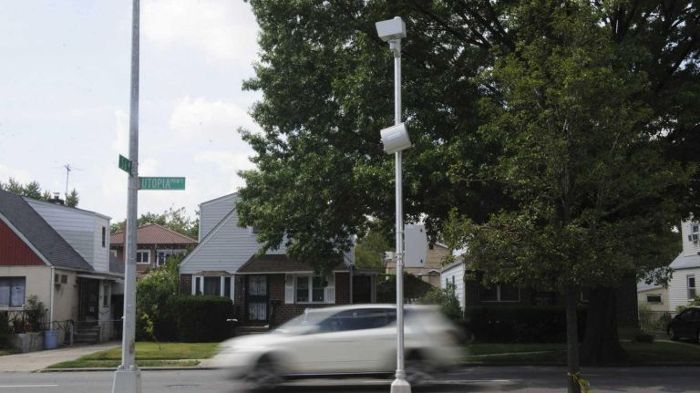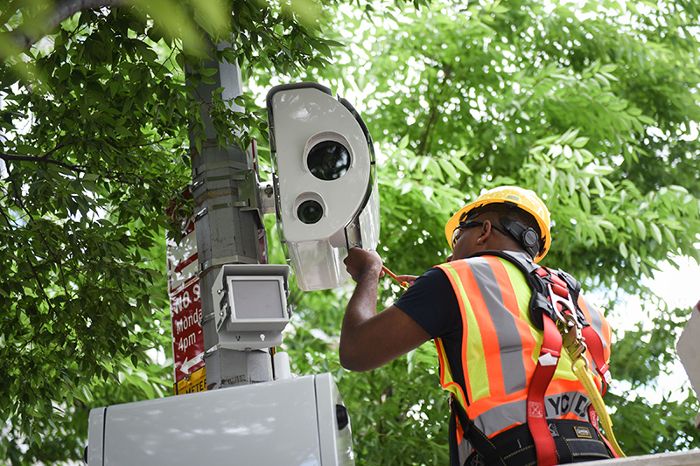New York City will see the start of a massive expansion of its school zone speed camera program this week (July 11), with double the number of units and increased hours of operation as part of Mayor Bill de Blasio’s Vision Zero initiative.
Authorized by state law, school-zone speed cameras have been in operation in New York City since 2014, with data showing that speeding in zones with a camera declines by more than 60%, with over 80% of violators not receiving a second ticket. The new speed-camera law was passed by the state legislature in March and was signed by Governor Andrew Cuomo on May 12. The new law takes effect on Thursday, July 11, expanding the maximum number of school zones from 140 to 750. School zones can each have multiple cameras and the New York City Department of Transportation (NYCDOT) has been rapidly scaling up its deployment program, with the installation of new cameras citywide at a rate of about 40 per month through 2019, and 60 per month in 2020, expecting to reach all of the law’s maximum 750 school zones by June 2020.

The other major changes to the city’s speed camera law include:
- Doubling speed camera hours – Speed enforcement will now operate year-round on all weekdays between 6:00 am until 10:00 pm, including summer and school vacations. Previously, cameras’ hours were variable, and they could only operate during a given school’s active hours. NYCDOT estimates that the law’s expansion will on its first day double the overall number of hours when speed cameras can issue summonses;
- Extending camera zones – Cameras’ maximum distance from schools was expanded to a quarter mile radius from a school, rather than the previous restrictions, which now allows cameras to be installed near hundreds more schools.
Fines for speed-camera violations remain unchanged at US$50, issued to those who exceed posted speed limits by more than 10mph (16km/h). The notices of liability are issued by NYCDOT via mail to the owner of the vehicle and are adjudicated at the NYC Department of Finance.

The City uses a variety of methods to encourage people to drive at safe speeds, including the installation of speed humps, the narrowing of wide travel lanes, the modification of traffic control signal timing, and the Police Department’s enforcement of the speed limit. NYC reduced its speed limit to 25mph (40km/h) in order to make the city safer for pedestrians, cyclists, and drivers. The NYCDOT notes that even a small difference in vehicle speed makes a big impact in terms of safety; a pedestrian struck by a vehicle travelling at 30mph (48km/h) is twice as likely to be killed as a pedestrian struck by a vehicle travelling at 25mph. The City’s speed camera program serves to deter drivers from exceeding the speed limit by more than 10mph, which helps prevent more serious crashes.
NYCDOT’s commissioner, Polly Trottenberg, noted, “On July 11th, we will double the impact of cameras and then install new cameras at an unprecedented rate. We are hopeful that we can continue to make progress on Vision Zero, where we have seen fatalities decline in New York City for five years running.”





